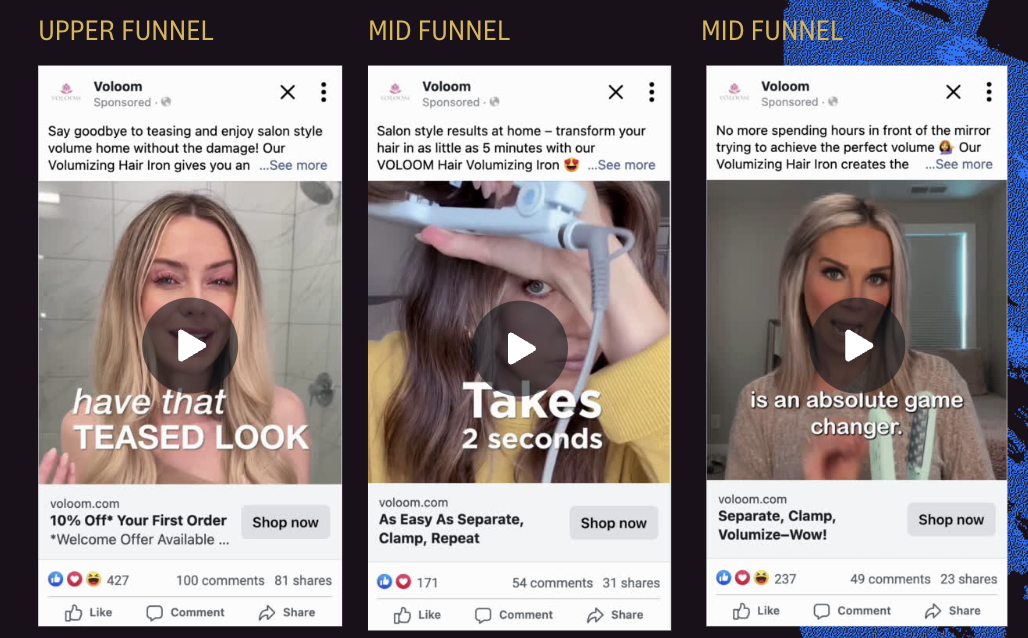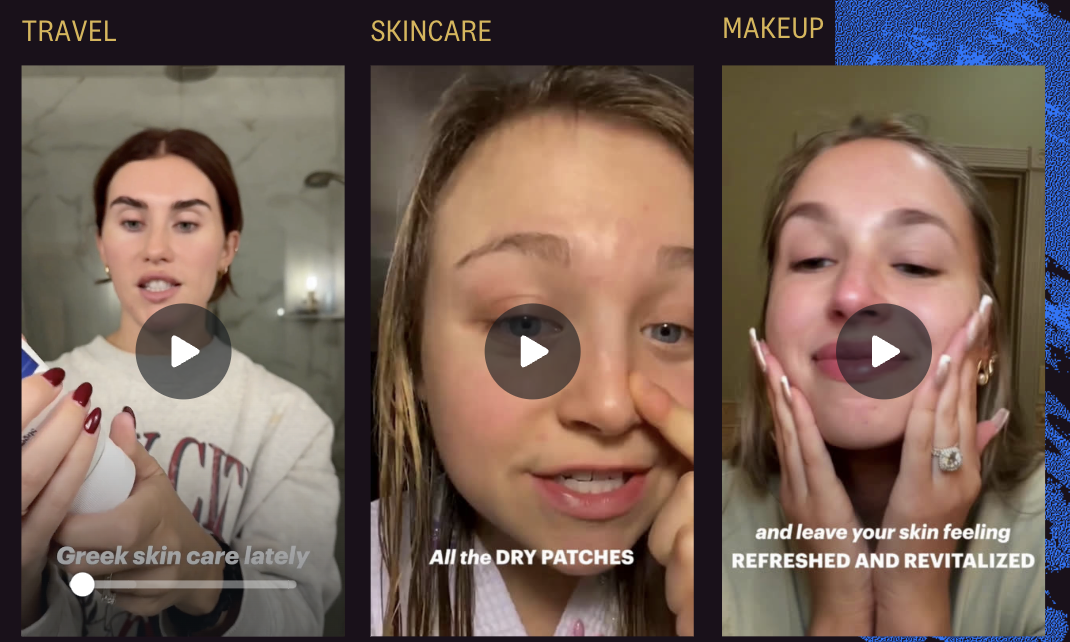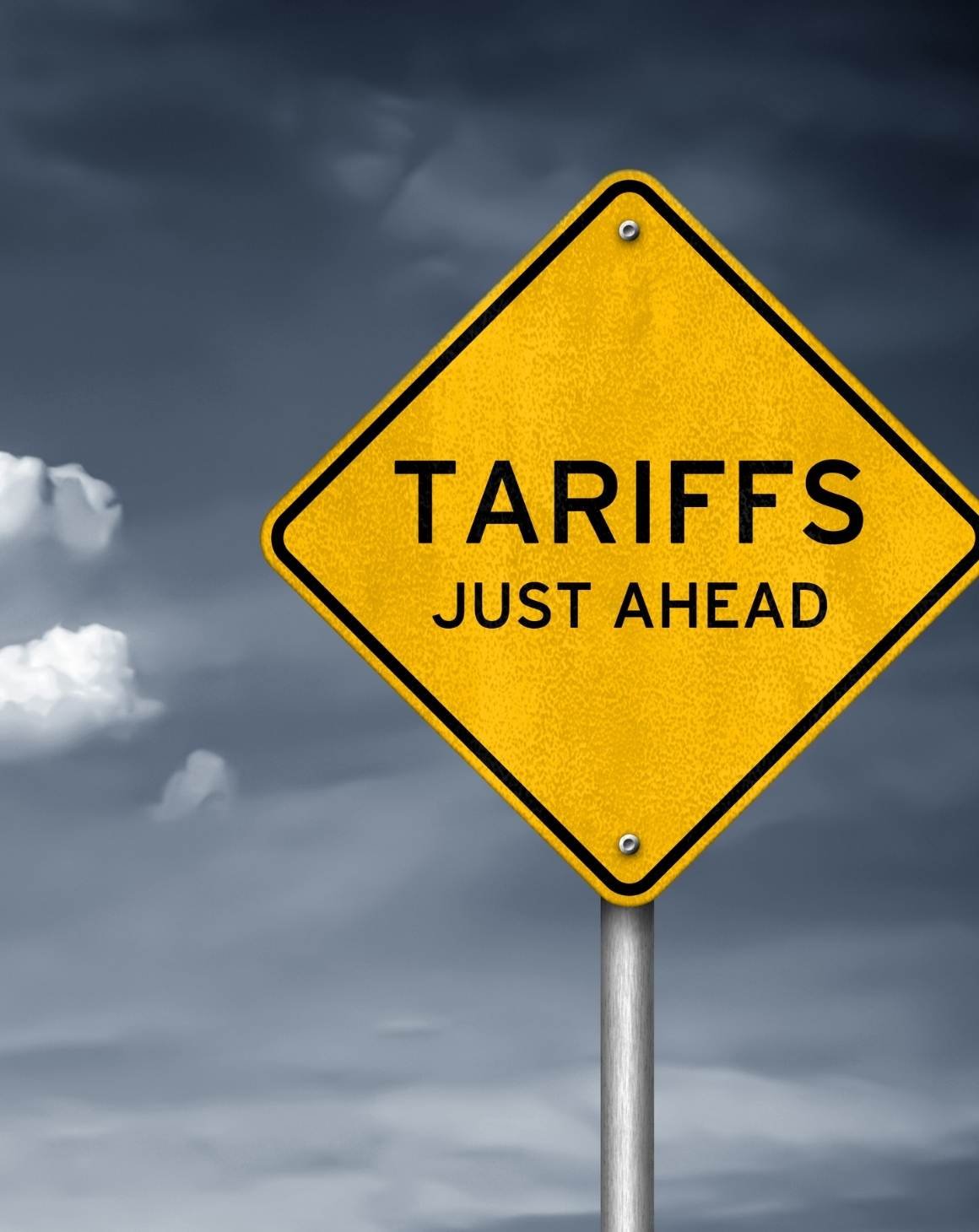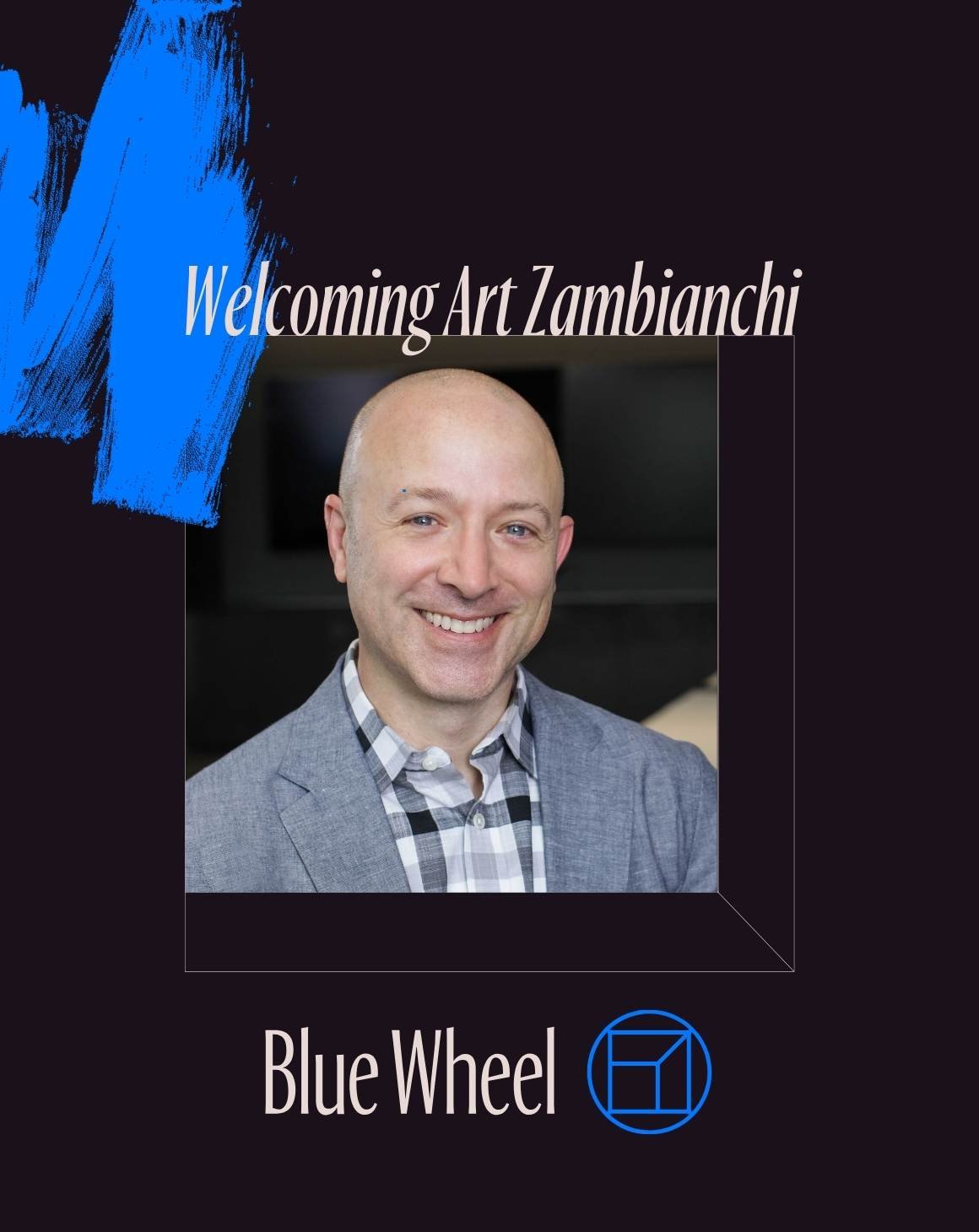The targeting strategies employed by eCommerce brands and digital marketers have undergone significant transformations in recent years, as more advertisers advocate for board audience targeting. The norm was to target audiences by manually segmenting them into distinct groups and tailoring campaigns accordingly. However, this process has become more sophisticated and efficient with technological advancements and the introduction of algorithm-driven platforms.
The truth is that advertising platforms such as Google, Meta, and TikTok are pushing brands and advertisers in this new direction. So, how can you use this push to broad targeting to your advantage and what should you focus on?
Keep reading as we dive into the shift to broad audience targeting and explore the crucial role of diverse creative content in digital advertising.
Narrow Audience Targeting Is Out
Marketers used to rely heavily on manual segmentation to reach their target audiences. This involves breaking down potential customers into categories, such as new customers, warm audiences, and past purchasers. Each segment requires unique ad campaigns tailored to their specific needs and behaviors.
For instance, you could target new customers with introductory offers or informative content about the brand. Warm audiences (those who have shown some interest but didn’t purchase) might receive retargeting ads with product recommendations or limited-time discounts. Your past purchasers could be engaged with loyalty programs or new product launches encouraging them to buy again.
While this narrow targeting approach allows for a certain level of customization and personalization, it has numerous challenges. Managing multiple campaigns for different audience segments requires significant time, effort, and budget allocation. The more specific your target groups are and the greater number of ad campaigns you have, the more budget you will need. Moreover, the effectiveness of these campaigns heavily depends on the accuracy of segmentation and the relevance of the creative content.
Broad Audience Targeting Is In
Everything changed with the introduction of Meta’s Advantage Plus and Google’s Performance Max campaigns. TikTok is also pushing for open targeting and reaching broader audiences. These platforms leverage advanced algorithms and machine learning to automate the targeting process, allowing advertisers to consolidate their budgets into a single campaign that targets all audience segments.
Instead of manually segmenting audiences and creating separate campaigns for each segment, you can now rely on the platform's algorithm to determine the best way to reach different groups of customers. The algorithm analyzes various data points, such as user behavior, preferences, and engagement patterns, to optimize ad delivery and maximize performance.
This shift comes with many great advantages. Platform algorithms are getting smarter at optimizing toward the action you want ad viewers to take, thus reducing the complexity and workload associated with manual segmentation and campaign management. You can focus more on strategic planning and creative development rather than spending hours on segmentation and targeting adjustments.

The algorithms improve the efficiency of ad campaigns by leveraging data-driven insights to deliver the right message to the right audience at the right time. The quality of the audience is determined by how likely they are to take the action you are optimizing for, such as purchases, clicks, etc. Also, algorithm-driven platforms can move budgets faster behind people at different customer journey stages with content that’s most likely to get them to take that action.
Consolidating your ad spend into fewer audience segments makes the learning phase less expensive and simplified ads management allows you to get better insights from your running campaigns. Know that Meta and TikTok require about 50 conversion events in seven days to consider the campaign optimized and out of the learning phase.
It is crucial to spend enough to get those 50 conversions in seven days, give it another week, and look at that second week to see how much your efficiency improved from the first week since launching the campaign. Revise your creative content if you are not satisfied with accomplished results.
From an ad-buying perspective, removing manual budget adjustments is significant as it allows you to focus more on creative content, which is where most paid social platforms are driving. This is becoming increasingly important across Google as well.
In its essence, the broad targeting approach is less about defining your audience through targeting and more about targeting your audience through your ad creative and letting the platform find the right audience.
Creative Diversification Is the Key
The key to success with broad audience targeting lies in creative diversification. While algorithms such as Meta’s Advantage Plus and Google’s Performance Max handle targeting and optimization, it’s up to brands and advertisers to focus on producing a wide range of creative content that can effectively engage different audience segments and drive desired actions.
Creative diversification involves developing various ad types that cater to different customer needs, preferences, and stages in the buying journey. Provide high-quality, diverse ad creative with images, videos, and carousels to ensure that the algorithm has enough options to choose from and can match the right ad with the right audience. Consider leveraging UGC and TGC, collaborating with influencers, and repurposing existing content.
With diverse creatives targeting different segments, maintaining brand consistency becomes crucial. Ensure all creatives align with your brand's voice, tone, and visual identity. Test and optimize your creatives to identify what works best for different audience segments and stages in the buying journey.
While Google and Meta have paved the way with their constantly evolving algorithm-driven platforms, TikTok is emerging as a new player in the game by pushing digital advertisers to an open targeting approach. Keep up with each platform’s latest developments and best practices, monitor your campaign performance regularly, and be ready to adapt your advertising strategies as needed.
Creative Diversification Examples
To illustrate the power of creative diversification, let's look at a few examples.
Your content should vary based on the audience's stage in the buying funnel. For instance, a hair tool brand might require different messages for different stages.

The approach used for our client VOLOOM and its premier hair tool was to generate demand in the upper funnel with ads educating about the damage caused by teasing hair and presenting the brand’s tool as a healthier alternative.
Moving into the middle funnel, the focus was on a time-saving value proposition. This was demonstrated with user-generated content (UGC) showcasing how quickly and effectively the VOLOOM tool adds volume to different hairstyles. Lastly, the cost-effectiveness was shown with product comparisons to expensive salon blowouts, emphasizing long-term savings.
You can effectively nurture leads and drive conversions by diversifying your content to address different customer journey stages.

The skincare brand’s ad examples above are divided into travel, skincare, and makeup segments. The first segment focuses on the Greek roots of the product, appealing to travel enthusiasts, while the second segment has content highlighting the product’s effectiveness in improving skin conditions. The last segment demonstrates how the product seamlessly integrates into a makeup routine, enhancing skin health.
These beauty brand ads show how diverse creative content can effectively reach different audience segments and stages in the customer purchase journey.
Conclusion
Although it is challenging for some advertisers to switch from narrow audience targeting to broad targeting and embrace creative diversification, eCommerce brands should leverage the power of algorithms to reach their audience more effectively.
The key lies in producing a variety of content that speaks to different segments and stages of the customer journey. As targeting tactics and algorithms continue to evolve, the importance of creative content will only grow, making it an essential component of any successful ad campaign.
We recommend watching our latest webinar, "Adapting to the Shift to Broader Audiences", to dive deeper into this topic and gain valuable insights from our VP of Brand Strategy, Nick Bond.








.png)
.png)
